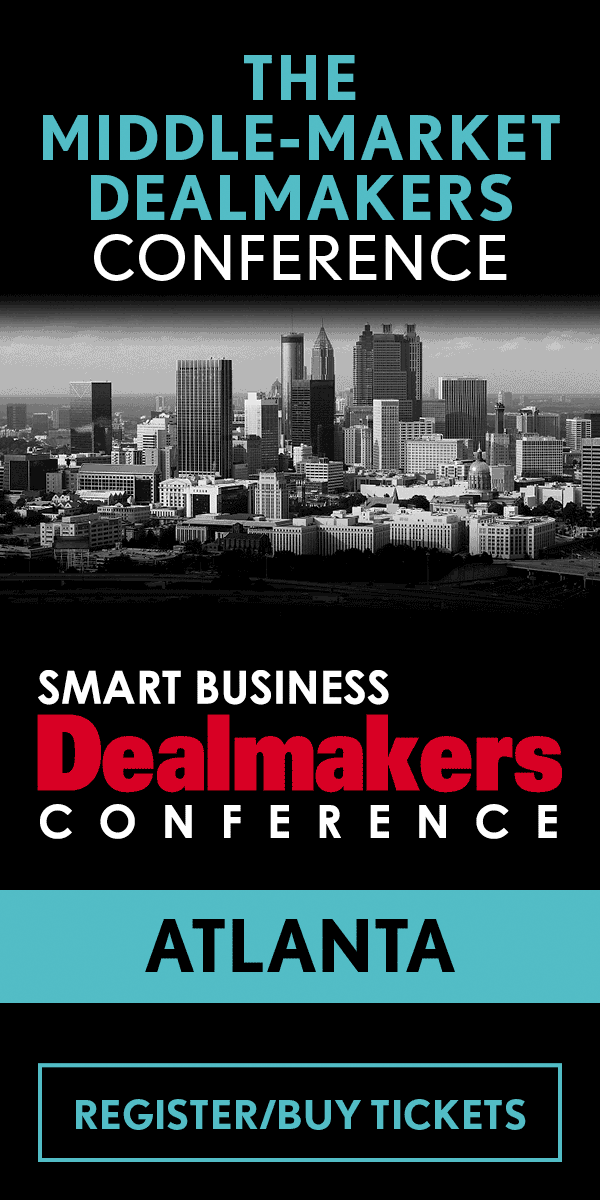The historic uptick in dealmaking activity between mid-2020 through the first half of 2022 meant a lot of late nights for Edgewater Capital partner Bob Girton.
"We were all running," he said at last year's Cleveland Smart Business Dealmakers Conference. "We would talk about historic volume, that activity, and just the late nights and maybe the energy going to the market."
But then when the summer of last year hit, he says the world changed again, leading to today, which he calls a digesting period.
"There's just a lot of uncertainty," Girton says. "So, if you're thinking about noise, the economy, the political and geopolitical complexity, derivative impacts, COVID ... in the U.S. the cost of capital is a little different. And I'd say, in general, I think everyone feels fatigued."
While compared to the previous few years deal flow today feels as if the spigot has been turned off, he says the stats say activity could be considered historically normal. There are a lot of buyers and a lot of sellers, but not a lot of activity. That has dealmakers in a sort of holding pattern.
"We're locked and loaded that as soon as — I wouldn't say improvement — but as soon as there's stability, you'll see a recovery in that market pretty quickly," he says.
The paradigm for private equity buyers has changed. He says his cost of capital was 5-7 percent last year, now it's 10-12 percent. So, the leverage he can put on a business is totally different, meaning the businesses he can buy are totally different. And in such an economically uneven environment — good for some, challenging for others — valuations would presumably come down. However, he says they haven't, which has led him to consider companies in tiers.
"I would say break the market into three," he says. "So, there's A's, B's and C's. The A's, nothing's changed. And there's a smaller number of them. They're going at really high prices. And we need to market or over-equitize them and just get them done. The B's and C's are a little more broken, and there's a lot more C's than B's. And you're playing a value game on what's the tradeoff between the value I'm paying off and is this thing broken enough that I can extract? So, you got to be a little bit more picky on where you're playing. And the common themes of an A transaction is did you prep? Do you know your customer, your demand drivers, and can you convey certainty around your forecast? Are you acyclical or a counter cyclical story? If not, you've got a problem. Are you linked to a mega trend or a growing market? So, somewhere I can say if I look out to 2030, I feel really good about where we're going. This next part might be noisy. Compelling gross margins. So, if I saw your margins pop, I don't know how to how to underwrite that. I don't know if they're durable or sustainable. On the other hand, if they're declining, I've got a different problem. And then the last, I'm looking for an executable plan. So, can I continue to grow this or is it a fixer upper? And then it puts you back into that C and B. We're being picky around where we're spending our time. And let's say we're not seeing a lot of A's that justify the price that it takes to get it done."
When multiples are high for a target company, it's tough to get the leverage, which could lead to over-equitizing.
"You're going to justify and say I'll lower the cost of capital when rates come down, or I'll do an add-on acquisition and get it later," Girton says. "So, you're self-rationalizing a deal, rightly or wrongly, you're finding a way to put more equity in to get the deal done. In B's, you're coming back to this value trade off. And so then there's more structure in the deal. So, you're talking about an earn out or liquidation preference or minority investment or some sort of creativity to bridge the gap."
However, whatever stress buyers feel when it comes to the capital situation, he says owner/ operators do not care that a buyer's cost of capital has gone up dramatically.
"So, it has happened in such a fast period of time, we're still in digest mode," he says. "And the order of magnitude is so significant that we're not off a little bit, we're off by several turns. So I'd say we're still bridging that. A lot of it we're talking about more on anchoring on the right level of EBITDA. And then you're talking about an earn out or some structure that way, or some creative thing in the capital stack. I haven't gotten enough owners to, 'Alright, forget it. I'll be your paper.' Because that might help me a little bit, bridge a little bit, but it doesn't change the, you want it at 12 and I think it's worth an eight."




